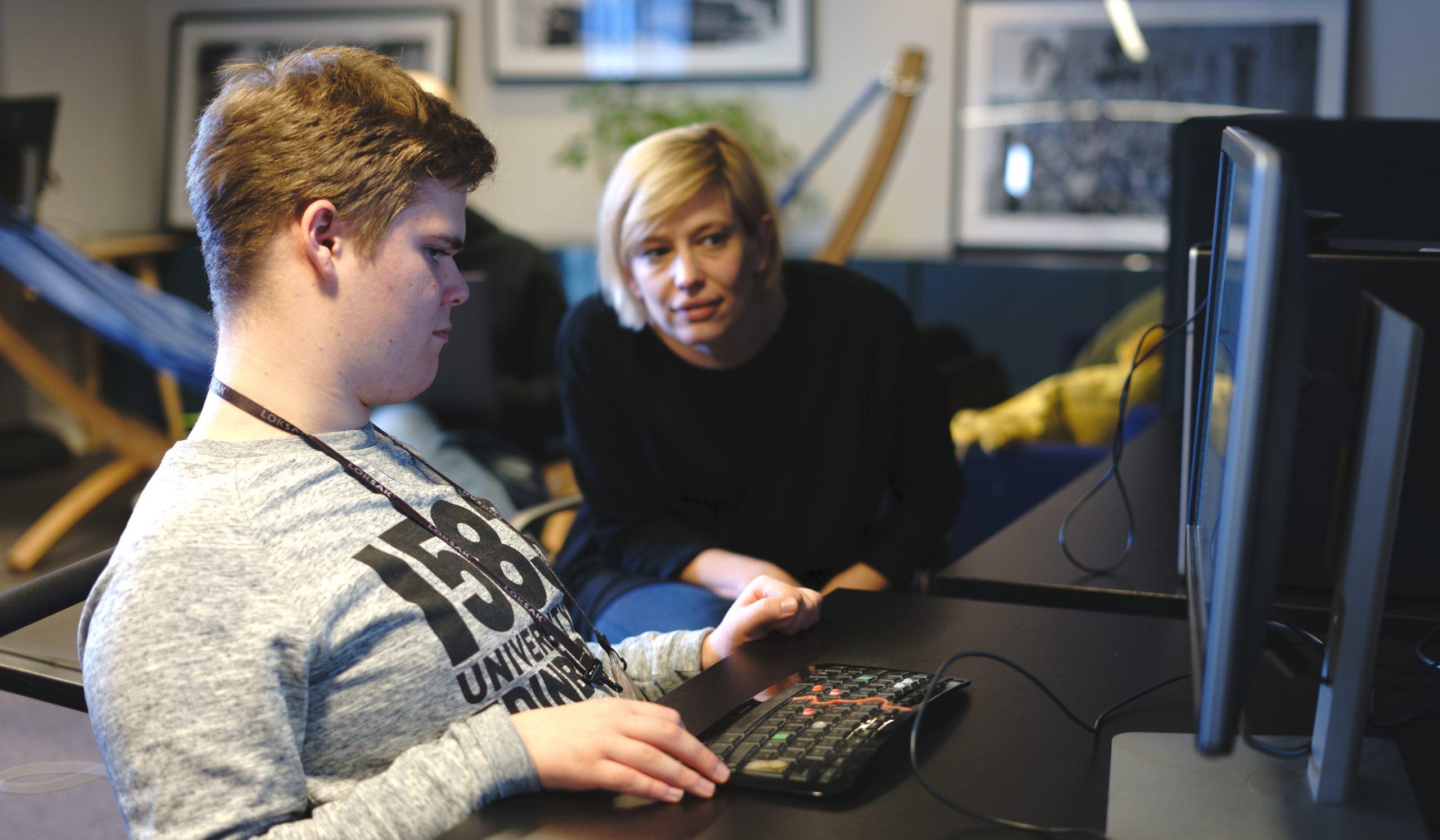
What you as a care provider should you think about to comply with the new law on accessibility for public services
The Act on Accessibility to Digital Public Services (Act 2018: 1937), also known as the DOS Act, means that digital public services must be accessible to all users, including people with disabilities. It requires tools designed for healthcare to maintain a high standard when it comes to accessibility. The law implements the accessibility directive that applies to all EU countries. For existing websites, the law became effective in September 2020. To give all patients, regardless of need, the best patient experience, we work with accessibility at several different levels. Sofia Rådström, responsible for the user experience in Doctrin’s platform, tells us more about what the Accessibility Directive means and what we at Doctrin do to help our customers comply with it.
What does the Accessibility Directive mean when it comes to digital solutions in healthcare?
A patient or relative who has a temporary or permanent disability should not be excluded from digital care services. This requires that the services are perceptible, manageable, understandable, and robust. More specifically, this means that the public service provider must ensure that websites, apps, and documents comply with a specific European standard, which is based on Web Content Accessibility Guidelines (WCAG) at level AA in version 2.1.
In addition, you need to publish a so-called accessibility report, a document that tells you how to meet the accessibility requirements. The law requires that the user must be able to get in touch with the care provider to point out shortcomings and request that they be rectified.
The law covers public and private care providers.
Doctrin has long focused on accessibility. In what way does the Accessibility Directive affect our functionality or way of working?
Indeed, we have always focused on usability and accessibility, but the directive has forced us to take accessibility to the next level. It is suitable for our customers who can live up to the legal requirement and benefit so many patients who benefit from the improvements when they seek care digitally. It has also led to increased competence and awareness among everyone at Doctrin. Today, accessibility is an integral part of our development process, and we have significantly strengthened our expertise in the area.
In 2020, we have done a stable job evaluating our patient interface with WCAG and rectified the shortcomings we have found. We have done this with internal and external expertise. For example, when it comes to using screen readers, the interface has adequately been boosted. Screen readers are tools on your computer or phone that read out content and allow the visually impaired to navigate through the service. Before the law would come into force, we offered our customers an accessibility report that customers can choose to publish on our platform or in another way.
 Henrik Pontén, who has a severe visual impairment, works together with Sofia Rådström,
Henrik Pontén, who has a severe visual impairment, works together with Sofia Rådström,
responsible for the user experience, to improve Doctrin’s solutions regardless of disability. January 2020
Who benefits from the accessibility work?
When we adapt the platform to the accessibility directive, we make it useful for people with temporary or permanent disabilities. A disability is an impairment of physical, mental, or intellectual ability. It can be anything from a broken arm to a mental diagnosis. It is thus a large and far from a homogeneous group. About 25% of the [Swedish] adult population have problems with reading. More than half of the [Swedish] population over the age of 16 needs reading glasses. Half a million [Swedish] people over the age of 16 have a mobility impairment, and 1.5 million have poor hearing. Of course, these are just a few examples. Reference: Funka
Many of the accessibility requirements have an impact on a broad target group. High contrasts, consistent navigation, and consistent designations are examples of things that benefit all users.
What do you think is essential to keep in mind as a caregiver when it comes to inclusion in digital channels?
Firstly, I think that the possibility of digital contacts as a complement to physical visits is excellent from an accessibility perspective. For example, it opens for people who do not have the opportunity to travel to get in touch with the best possible care. Asynchronous chat is also something that suits some people better than speech. It gives time to think and the opportunity to go back and read [the conversation] several times. But it is therefore vital to remember that you as a care provider are responsible for ensuring that the digital channels are accessible to everyone.
Accessibility is not a one-time effort but something you need to work with continuously. You need to think through which digital channels you have, there are undoubtedly several, and make sure you keep track of whether they meet the requirements.
The WCAG requirements can be quite technical, so if you do not have the expertise yourself, it can be useful to ensure that your technology suppliers’ own development department has it. But accessibility is not only about the technology platform itself but also what content you publish on your website. If you work with digital content in the form of, e.g., video or pdf, there are, for example, special requirements linked to it.
Any final recommendations or comments?
A tip is to use all digital projects as a starting point in a wide variety, instead of designing for the average user. We have entered the accessibility work with ordinary solutions working for everyone, rather than building unique solutions. It usually gets better for everyone.
Read more on Doctrin or the government websites Digg and Web Guidelines.
If you are interested in a demo of our solutions, contact Hampus Edin, Key Account Manager

